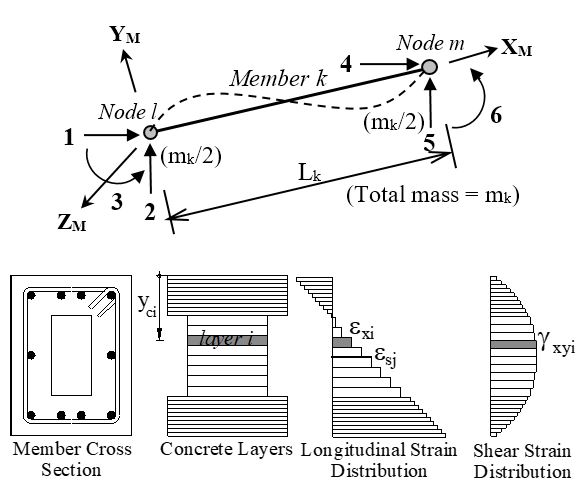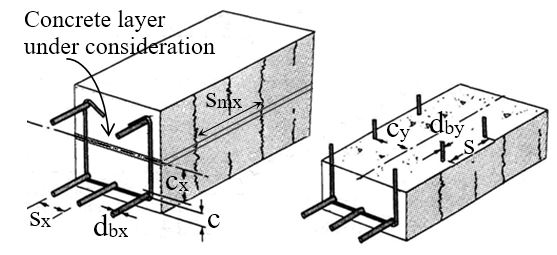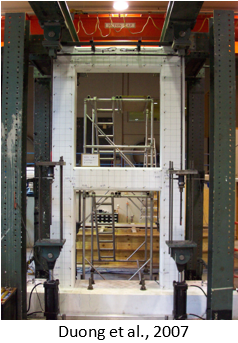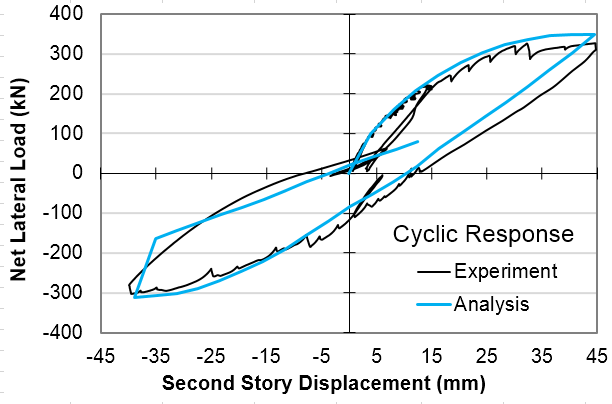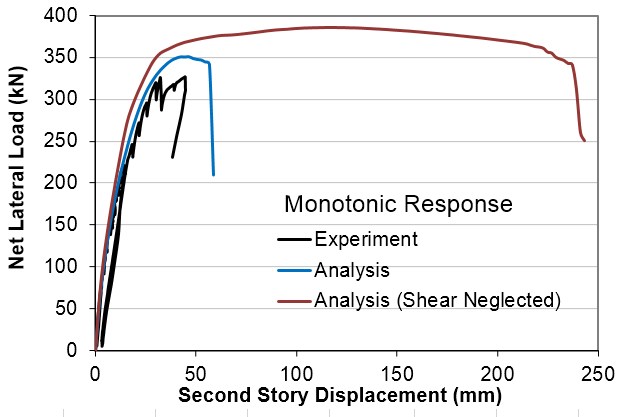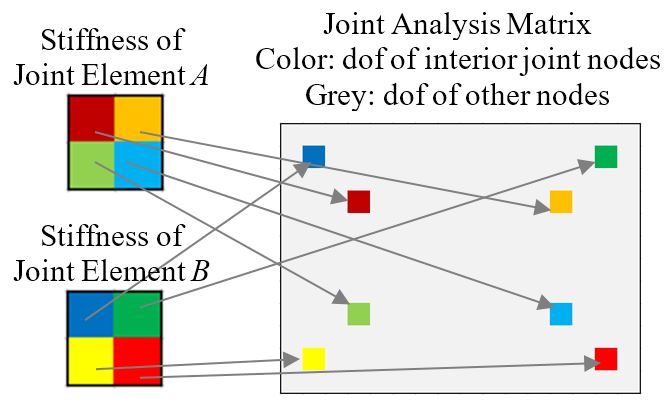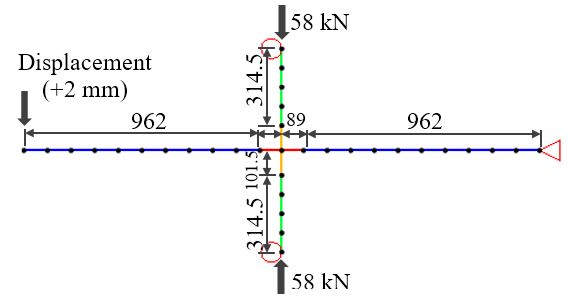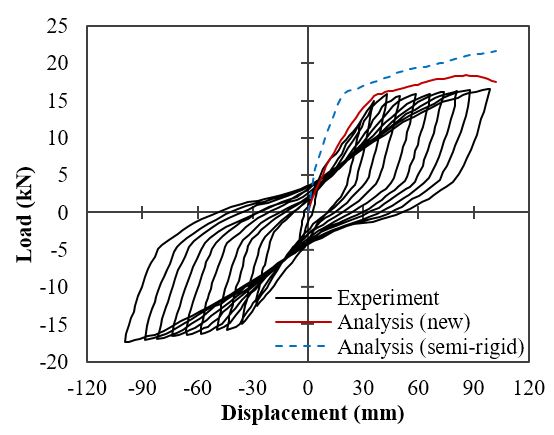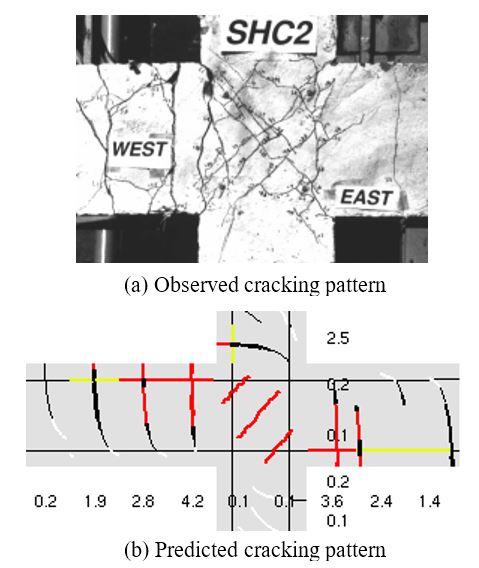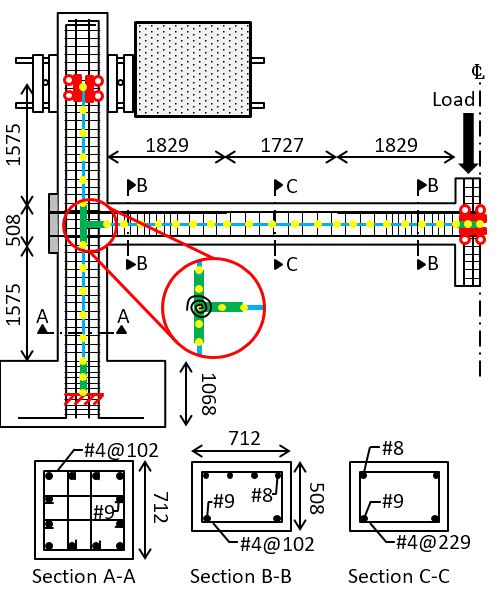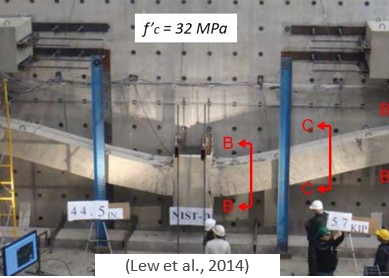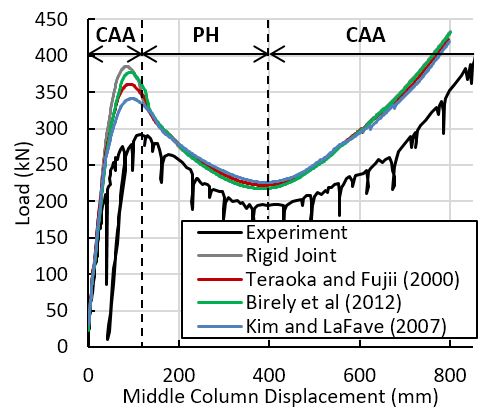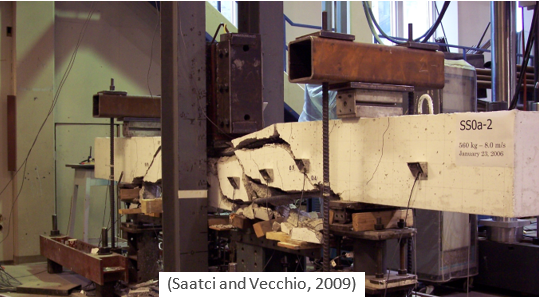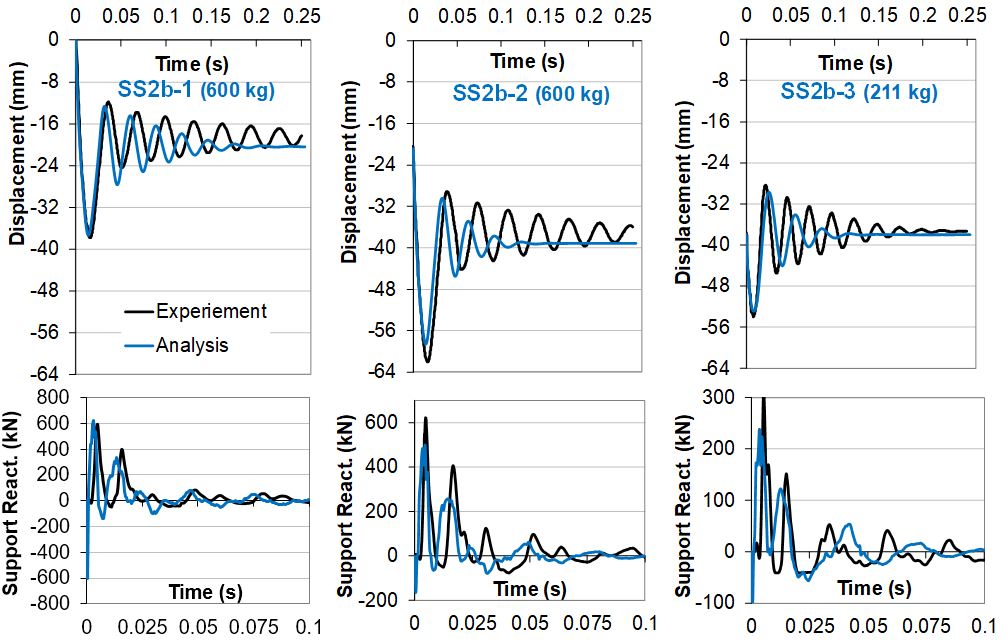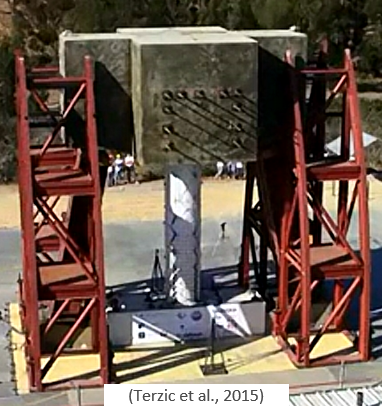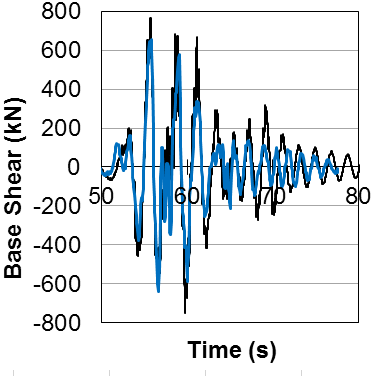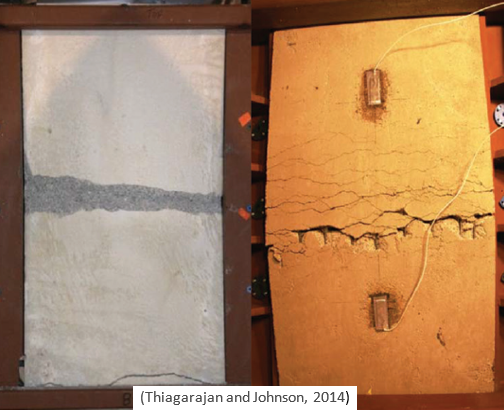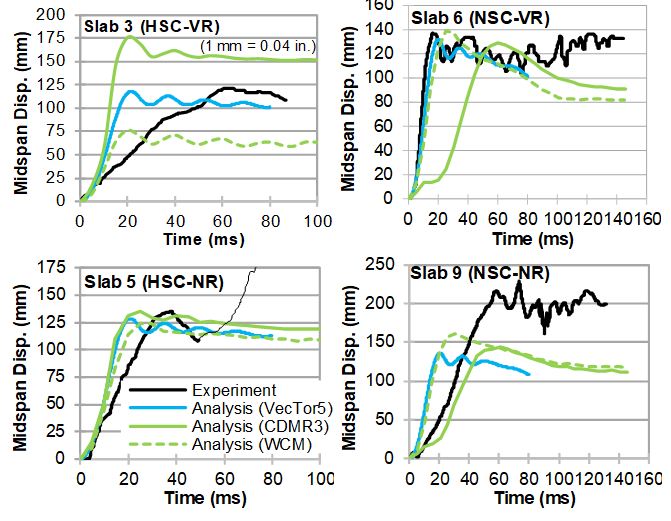RESIST RESEARCH GROUP
Research
CROSS LAMINATED TIMBER as a TSUNAMI-resilient alternative for the next generation of buildingsRelated Publications: JP22, JP18, CP20.The ever-increasing damage due to natural disasters has accelerated the quest for new construction systems that can perform well during both seismic and subsequent tsunami events. Cross Laminated Timber (CLT) is a new and robust construction material with proven seismic performance. It's potential as a tsunami-resilient material has not yet been explored. To assess the tsunami resilience of CLT buildings, it is first necessary to understand and characterize their out-of-plane behavior because tsunami waves create a load pattern that engages the out-of-plane panels. There is currently a major lack of knowledge on the out-of-plane behavior of CLT buildings, which starts from the individual panel connections and the system-level response.
The objective of this project is to advance the current understanding and characterize the behavior of CLT buildings under tsunami load conditions in two domains. First, in the connection-level domain, we will investigate the behavior of CLT panel connections under tsunami-induced out-of-plane load conditions; identify key connection design parameters and quantify their influences on the out-of-plane behavior; and develop simplified equations and procedures for their resilient design - see on example in the figure above. Secondly, in the system-level domain, we will investigate the tsunami-load behavior of CLT panels, metal connectors and their contributions to the system response; characterize the interactions between in- and out-of-plane behaviors and the governing failure mechanisms; and quantify the system-level resilience. |
NUMERICAL MODELING OF UHPFRC MEMBERS INCLUDING CRACK SPACING FORMULATIONSRelated Publications: JP20, CP11, CP10.Ultra-high performance fiber-reinforced concrete (UHPFRC) has emerged as a new class of material that offers excellent mechanical properties. As compared to regular concrete, UHPFRC is about five to six times stronger in both compression and tension, with compressive and tensile strengths of up to 250 and 12 MPa, respectively. While design guidelines are continuously being developed for UHPFRC, a number of obstacles hinder the widespread application of this material. One of them is the complex behavior of UHPFRC members (involving concrete, fibers, reinforcing bars, and the bond in between them); another is the lack of fully developed and validated numerical models to simulate these behaviors. To help overcome these challenges, this study establishes a numerical material modeling approach for the nonlinear finite element analysis of UHPFRC. The approach aims to provide a general applicability to model both shear- and flexure-critical members made from strain-softening or -hardening UHPFRC, while still using simple equations. This objective can be achieved by establishing a comprehensive set of crack spacing formulations and modeling recommendations to capture the unique behavior of UHPFRC. The crack spacing estimates are used together with the Diverse Embedment Model for FRC, which is extended here for the modeling of UHPFRC. |
HYBRID FE-ANN MODELING METHODOLOGY FOR POST-INSTALLED ANCHORS SUBJECTED TO HURRICANESRelated Publications: JP23, JP16, CP16, P5, P6.Post-installed adhesive anchors are frequently used to attach non-structural components (NSC), such as mechanical equipment, telecommunication antenna towers, balcony railings, and solar panels, to concrete members. Damage reconnaissance studies demonstrate that NSC damage accounts for a significant portion of the total hurricane repair costs for buildings and that anchorage failures are the most prevalent failure mode for NSCs. This study aims to develop a 2D analysis methodology that combines the strengths of 3D high-fidelity finite element (FE) modeling with the artificial neural network (ANN) techniques to rapidly simulate the anchorage behavior while accounting for the effects of the adverse environmental exposure, concrete cone failure, and wind-induced bending effects.
|
HELICAL PILE-TO-FOUNDATION CONNECTIONS FOR RESILIENCE TO UPLIFT LOADSRelated Publications: JP21, JP6, CP19, CP18, CP17, R2.Helical piles present a significant potential to create resilient, durable, and faster-to-construct foundations while ensuring a long-term and maintenance-free service life. To achieve their full potential, it is imperative that helical pile anchorages (i.e., pile-to-foundation connections) perform well without resulting in any cracking to the surrounding concrete. However, there is a lack of research and design guidelines on how to design resilient connections, especially for load conditions that create net uplift and cyclic loads. The objective of this study is to advance the current understanding, quantify the influence of helical pile-to-pile cap connection detailing on the global system behavior, and propose recommendations for their resilient design. The research findings are also applicable to micro piles with similar termination brackets.
|
SYSTEM-LEVEL MODELING METHODOLOGY FOR CAPTURING PILE CAP-PILE GROUP-SOIL INTERACTIONRelated Publications: JP24, JP16.In tall and light structures, such as transmission towers, wind turbines, and light-gauge steel structures, there is an increasing application of pile cap-helical pile foundation systems to resist the uplift loads due to the effects of windstorms and earthquakes. There is a lack of knowledge, published literature, or analysis methods to account for the effects of pile cap, helical pile group, and soil interactions on the system response, particularly, for the load conditions creating net uplift loads. The objective of this study is to establish a system-level modeling methodology for the holistic analysis of pile cap systems, accounting for the effects of interactions between system components and the inherent material nonlinearities.
|
ADVANCED ANALYSIS METHODS FOR CONCRETE BRIDGESRelated Publications: JP17, CP15, P4.A significant portion of the nation’s aging bridge inventory consists of bridge elements which were not designed to carry modern traffic loads. Current advances in computational modeling have been proven to be a versatile tool accurately predicting the nonlinear pre- and post-peak behavior of structural members, including the effects of shear cracking and the nonlinear strain distributions. This objective of this project is to establish and experimentally validate a two-stage performance assessment methodology based on a high-fidelity numerical modeling approach. Crack patterns, load-displacement responses, failure modes, and governing critical members are investigated under near collapse conditions. This methodology has the potential to reduce the number of bridges found overloaded using overly-conservative traditional methods, resulting in significant cost savings.
|
A SPECIALIZED STRUT-AND-TIE METHOD For BRIDGE PIER CAPSRelated Publications: JP12, CP14, R1, P3, STM-CAP.‘Pier caps’ or ‘bent caps’ transfer the load from the girders to the columns. In Ohio, there are approx. 30,000 bridges with multiple pier caps for every bridge. When analyzed using the slender beam theory (i.e., sectional method), a large number of pier caps are found to be shear-overloaded even though they don’t exhibit any noticeable cracking or signs of distress. Rehabilitating all shear-overloaded pier caps will result in prohibitive costs. An accurate analysis method is needed to obtain more realistic shear capacities to correctly identify the overloaded pier caps.
The strut-and-tie method (STM) is a suitable method for capturing the deep beam action. The application of the STM, however, has many challenges including creating and optimizing a valid truss model, performing an indeterminate truss analysis, calculation of nodal and elemental stress limits, etc. The objective of this study is to explore innovative strategies to reduce the complexity of the STM by developing a strut-and-tie methodology to rapidly and accurately predict the shear capacities of deep pier caps. A graphical solution algorithm and associated computer program (STM-CAP) is developed to generate and analyze efficient strut-and-tie models while intuitively educating engineers in the correct use of the methodology. The outcome of this study will have a potential to result in: (1) significant cost savings due to rehabilitating less number of bridges, (2) reduced construction work and associated traffic congestion, and (3) reduced hazard to construction crews and traveling public. |
LIFE-CYCLE ASSESSMENT OF STRUCTURES FOR SUSTAINABLE & DISASTER-RESILIENT COMMUNITIESRelated Publications: JP22, JP14.The decision-making process for the choice of buildings in disaster-resilient communities should incorporate their environmental life-cycle impacts while preemptively accounting for probable disaster-induced damage. This is particularly important given the increase in the frequency of natural disasters due to the climate change and the major global environmental impact caused by the construction industry. The objective of this study is to advance the current understanding of the environmental impacts of buildings on disaster-prone regions in order to foster a more sustainable development of disaster-resilient communities of the future. This objective will be achieved based on a “small-scale” approach - i.e., the investigation of the environmental impacts of different post-disaster retrofit alternatives on the life-cycle performance of buildings; and on a “large-scale” approach - i.e., the combination of probabilistic and nonlinear structural analyses for the life-cycle assessment on entire buildings constructed with different technologies. |
RESILIENT AND LOW-EMISSION FOUNDATION SYSTEMS FOR WIND TURBINE TOWERSRelated Publications: JP24, JP21, JP16, JP6, CP19, CP18, CP17, R2.The majority of wind turbine towers are supported by gravity-based reinforced concrete foundations, which rely on its self-weight to resist the overturning moments created by windstorms. The result is a massive foundation system with thousands of cubic feet of concrete, tens of tons of reinforcing steel, and thousands of excavated cubic feet of soil. These values increase exponentially with the height of the wind turbine tower. In addition, the production of these massive quantities of material and excavation process tend to erase years of the environmental benefits of the wind turbine. The objective of this project is to characterize the structural, environmental and thermomechanical behavior of this foundation system through experimentation, nonlinear finite element modeling, and artificial neural network formulation and training. The expected outcome is a novel foundation system for wind turbine towers with significantly reduced size, life-cycle cost, and environmental impact that seeks to improve the energy efficiency of the wind turbines while increasing their long-term reliability and resiliency to strong windstorms and hurricanes.
|
CREATION OF COMPUTER PROGRAMS AND SPREADSHEETRelated Publications and Tools: See Reports, User Manuals, Bulletins, and Spreadsheets tab of the Publications page. Also see Modeling Software, STM-CAP, and Spreadsheet Tools pages.To enable the research and engineering communities to use the established formulations, a global simulation platform VecTor5 and a number of macro-enabled spreadsheets are created. These tools enable the dissemination of research findings and permit understanding the response of large, complete structures (as opposed to the isolated structural components) subjected to various loading conditions. Program VecTor5 incorporates more than 16,000 lines of numerical calculation algorithms, and are being updated as new material behavior models and calculation methods are being created by the research team. Related Users’ Manuals and Bulletins are also composed by the research team to contribute to the correct use of these numerical simulation methods.
|
SYSTEM-LEVEL MODELING METHODOLOGY FOR BRIDGE ELEMENTS RETROFITTED WITH EXTERNALLY BONDED FRPRelated Publications: JP13, CP13, CP8.Fiber-reinforced polymers (FRP) are widely used in the retrofit of concrete elements such as beams and columns. However, the system-level behavior of structures retrofitted with FRP is currently not well understood, and there is a lack of numerical simulation methods that can accurately account for the composite action and predict the structural response. Thus, an efficient staged analysis approach with an accurate FRP modeling methodology is required to provide a better understanding of the holistic structural behavior.
In this study, a finite element-based staged analysis methodology is proposed for deep beams retrofitted with externally bonded FRP fabrics (see the figure above). A two-stage verification study was conducted, including: constitutive modeling of critical material behaviors, and a full-scale structural modeling, both validated with experimental results available in the literature. The proposed analysis methodology was used to provide an effective retrofit solution for a real bridge bent and was able to capture the improved beam response, as shown in the figures below.
|
NONLINEAR MODELING TECHNIQUES FOR PERFORMANCE-BASED EARTHQUAKE ENGINEERINGDownload Related Publication: JP11, JP10, JP9, CP9.Performance-based earthquake engineering (PBEE) requires a large number of nonlinear dynamic analyses to statistically assess the performance of frame structures. The complexity and high computational demand of such procedures have hindered its use in practice. Simplified numerical modeling procedures can shorten the complexity and computational demand. However, there is a lack of understanding of the accuracy and reliability of the calculated responses from different numerical modeling techniques. This research aims to fill this knowledge gap by using the experimental data to verify the accuracy and computational demand characteristics of three different modeling approaches (shown in the figure below). Each created model has different levels of complexity and material behavior model |
A NONLINEAR ANALYSIS PROCEDURE FOR FRAME STRUCTURES WITH SHEAR-CRITICAL BEHAVIORRelated Publications: JP11, JP9, JP3, JP2, JP1, CP1.Although modern design codes require concrete buildings to be designed for ductile and flexure-critical behavior, many older, shear-critical structures exist in practice. Advanced nonlinear analysis methods with rigorous shear analysis capabilities are required to identify and accurately determine the load-displacement capacities of such frames. There is a critical gap in the knowledge for numerically simulating the shear behavior of building frames.
In this study, an analytical procedure is formulated for the nonlinear analysis of reinforced concrete structures consisting of beams, columns, and shear walls under monotonic and pushover loads. The procedure is capable of accurately representing shear-related mechanisms coupled with flexural and axial behaviors. The formulations established include rigorous nonlinear sectional analyses of concrete member cross-sections, using a distributed-nonlinearity fiber model, based on the Disturbed Stress Field Model (Vecchio, 2000). The proposed method is distinct from existing methods in that it allows for the inherent and accurate consideration of shear effects and significant second-order mechanisms within a simple modeling process suitable for analyzing large buildings. Assumptions regarding the anticipated behavior and failure mode of the system are not required. |
CAPTURING THE BEHAVIOR OF BEAM-COLUMN CONNECTIONS USING SIMPLE FRAME ELEMENTSRelated Publication: JP7, CP6, P1.For Seismic Loading: Beam-column connections undergo significant shear deformations and greatly contribute to story drifts during earthquake loading, yet their response is typically neglected in traditional frame analyses through the use of rigid end offsets. Although local joint models are available in the literature for the investigation of single, isolated joints, there is a lack of holistic frame analysis procedures simulating the joint behavior in addition to important global failure modes such as beam shear, column shear, column compression, and soft story failures.
The objective of this study is to capture the impact of local joint deformations on the global frame response in a holistic analysis by formulating a joint model into an existing global frame analysis framework. The joint element can simulate the joint shear deformations and bar-slip effects. Concrete confinement effects are also considered so that both older and modern joints can be modeled. For Progressive Collapse Loading: When a reinforced concrete frame is subjected to progressive collapse due to the loss of a structural column, the surrounding elements typically experience a significant overload that may lead to their collapse. The rotational capacity of beams and, consequently, the beam-column connections is a critical factor determining the structural resiliency. Numerical models developed to assess the structural response under a progressive collapse situation must incorporate the beam-column joint response. In this study, a review of the beam-column joint modeling approaches, constitutive models, and the ease of their numerical implementation are presented. Some of these models are utilized to simulate the response of a previously-tested reinforced concrete frame. The calculated structural response parameters are compared to the experimental results, and the accuracy of each constitutive model is evaluated. |
CAPTURING THE HIGH STRAIN RATE BEHAVIOR USING SIMPLE FRAME ELEMENTS (IMPACT, BLAST AND EARTHQUAKE)Related Publication: JP19, JP4, CP2 (impact), JP4, JP5, CP7, CP4, CP2 (blast), JP10, JP4, CP4, CP9 (seismic).Subjected to Impact Loading: Heightened levels of terrorist threat have resulted in strategic structures, such as government and commercial buildings, requiring design for blast and impact resilience. Currently, available methods employed in practice are typically based on overly simplistic macro models, however, reducing each structural component to a single-degree-of-freedom system. Moreover, the proper consideration of shear effects remains a major deficiency— even in the micro-finite element methods—despite the fact that impact and blast loads tend to result in significant shear damage. The objective of this study is to formulate and verify a nonlinear frame analysis method capable of inherently and accurately representing shear effects for elements subjected to impact loads. A second focus is to account for the effects of the rate of loading within an explicit three-parameter time-step integration method. Furthermore, verification studies were undertaken using 11 previously tested specimens.
Subjected to Earthquake Loading: Research studies conducted in the past number of decades have clearly demonstrated the importance of ductility in the survival of frames under strong ground motions. Modern seismic design codes, such as ACI 318, have thus incorporated stringent provisions requiring structures to be ductile and flexure-critical in their behaviors; however, many existing structures were constructed before the introduction of modern seismic design guidelines with nonductile and shear-critical details. There is an urgent need to perform safety assessments to identify and upgrade such structures. Currently available dynamic analysis methods, however, typically neglect shear-related effects. This omission may result in dangerously unconservative and unsafe response predictions. In this study, dynamic analysis formulations are established and incorporated in an existing global solution framework. The established method removes the current requirements of the assumed failure mode and sectional response hysteresis model, and thus is suitable for practical applications of seismic time-history analyses.
Subjected to Blast Loading: Recent bomb attacks on high-profile buildings have created an increased awareness and demand for blast-resistant structures. The methods commonly employed for blast load analysis are either based on overly-simplistic “single-degree-of-freedom” (SDOF) approaches or overly-complex “finite element analysis” (FEA) software. SDOF approaches have limited applicability and fail to accurately model the behavior of reinforced concrete. FEA software is time-consuming, demands significant knowledge, and requires a large number of customized input parameters for reliable results. This study examines the accuracy, reliability, and practicality of a recently proposed analysis method by modeling 18 previously tested specimens using only the default material models and analysis options. |




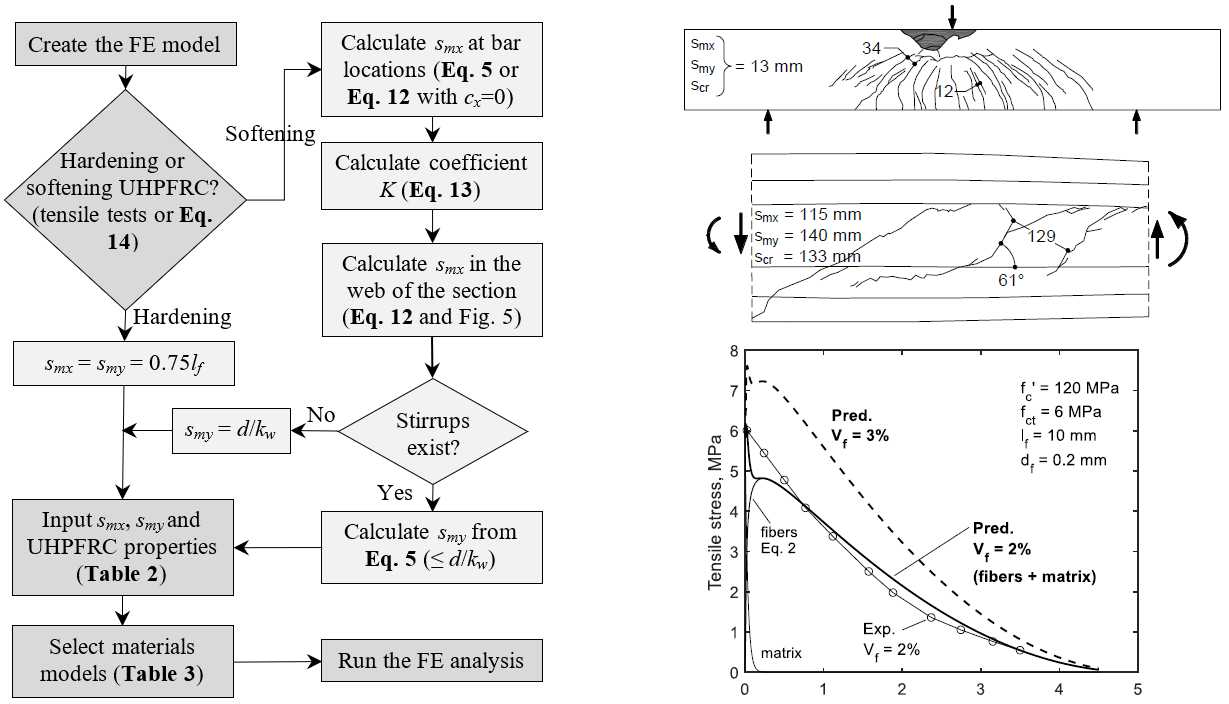

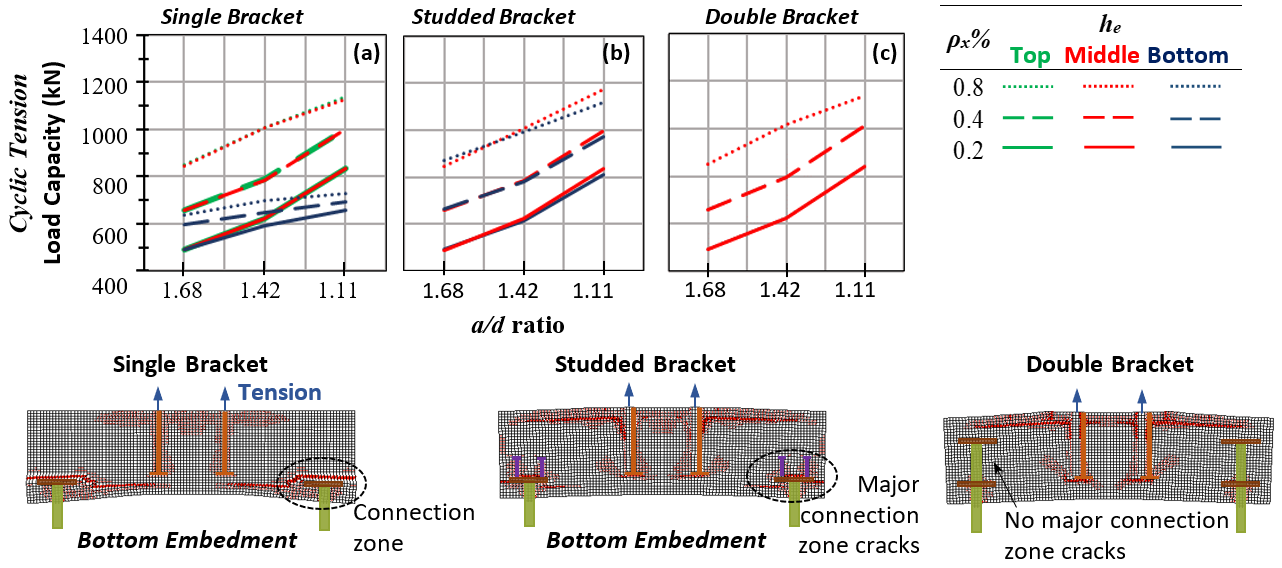
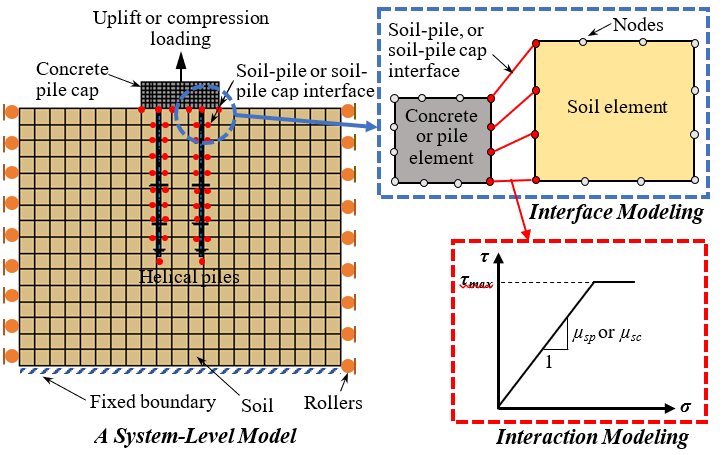
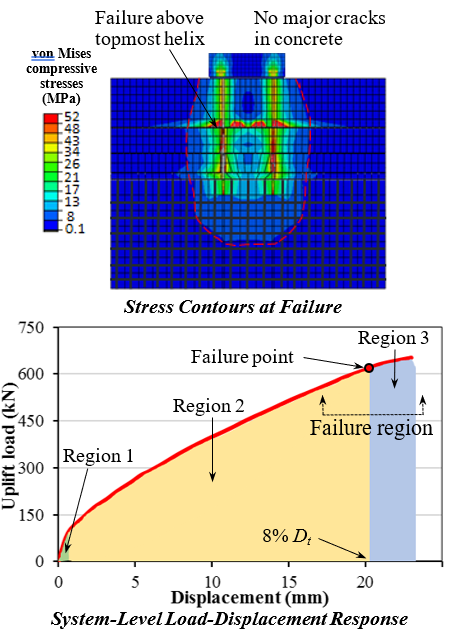

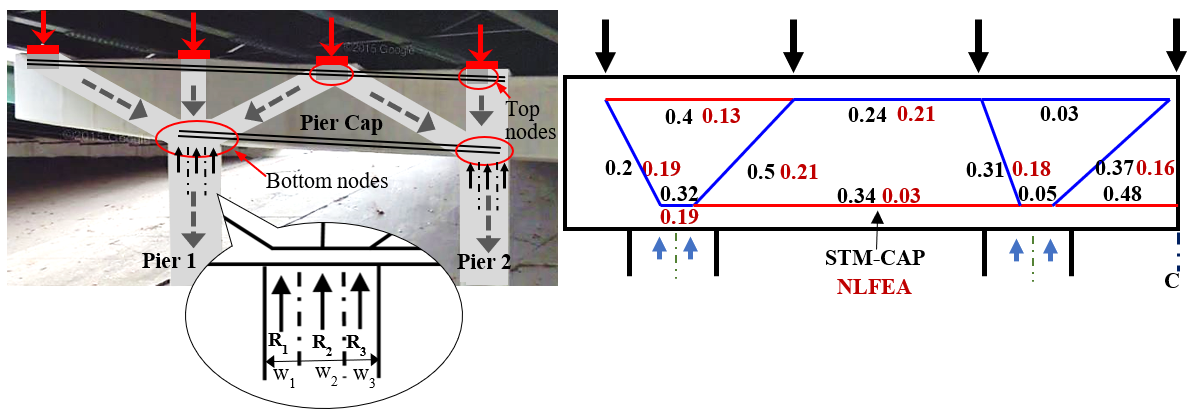

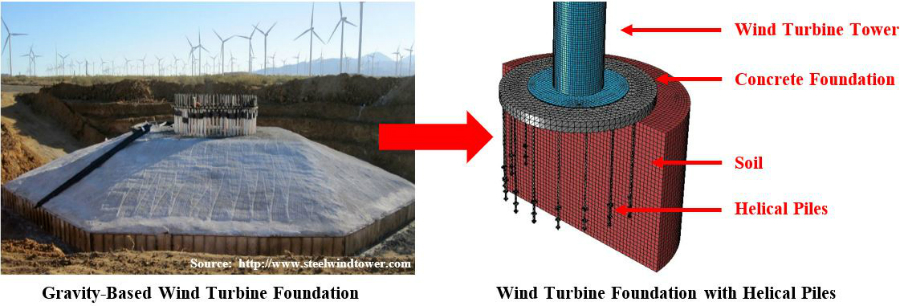
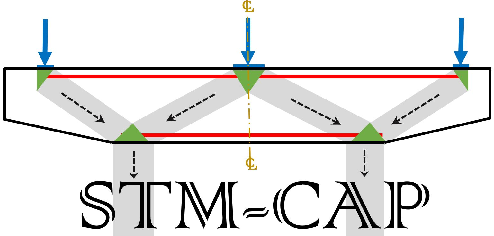
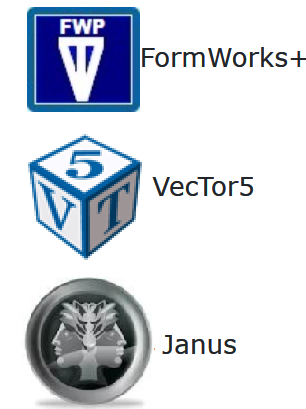
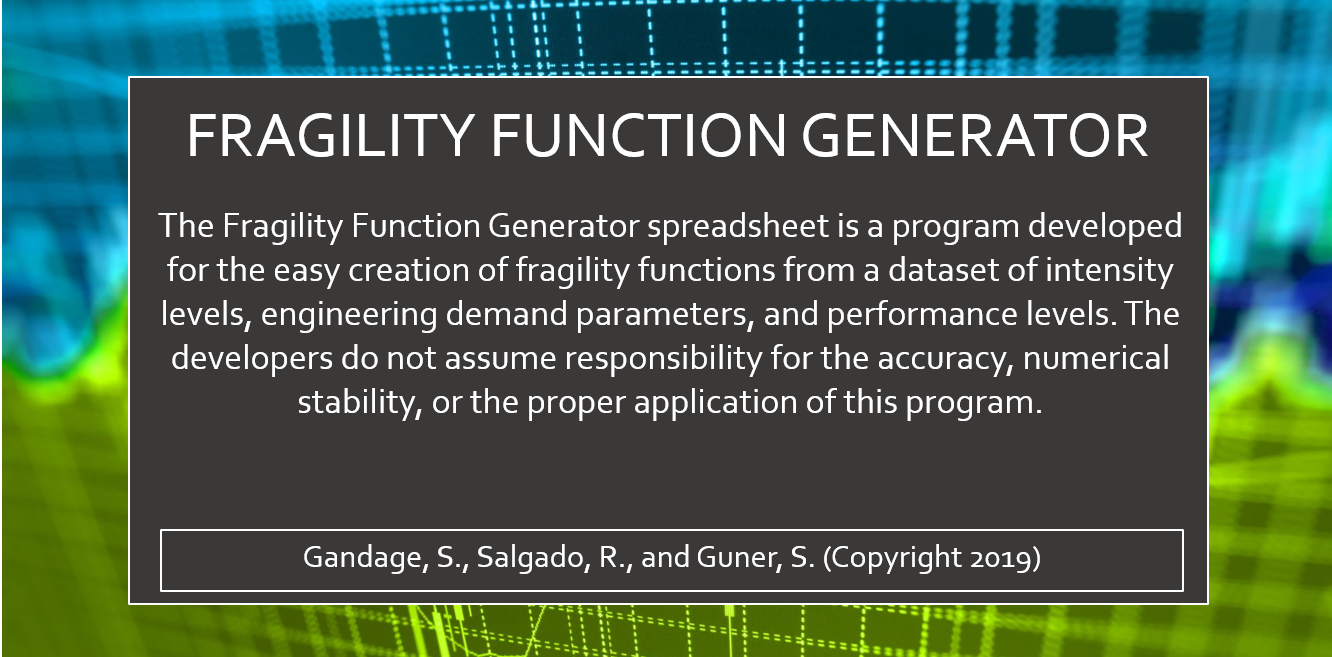
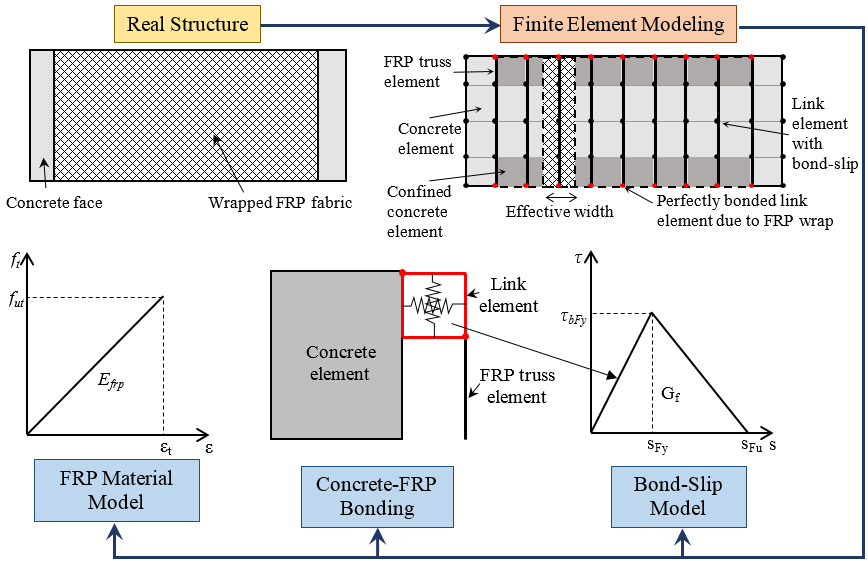
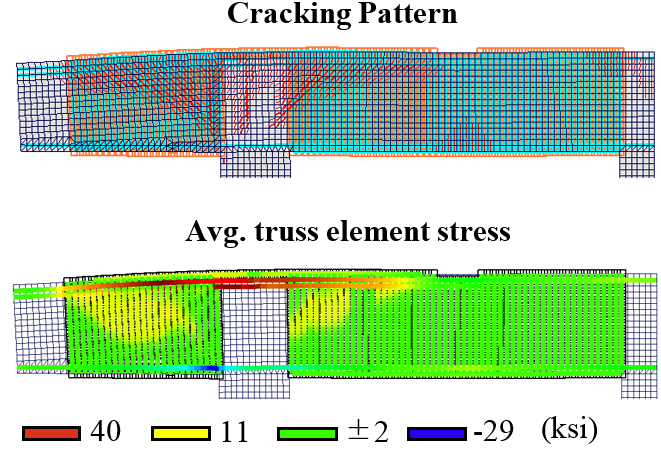
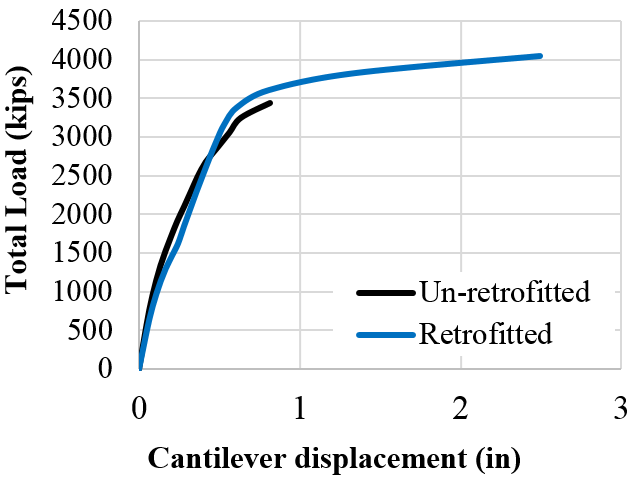
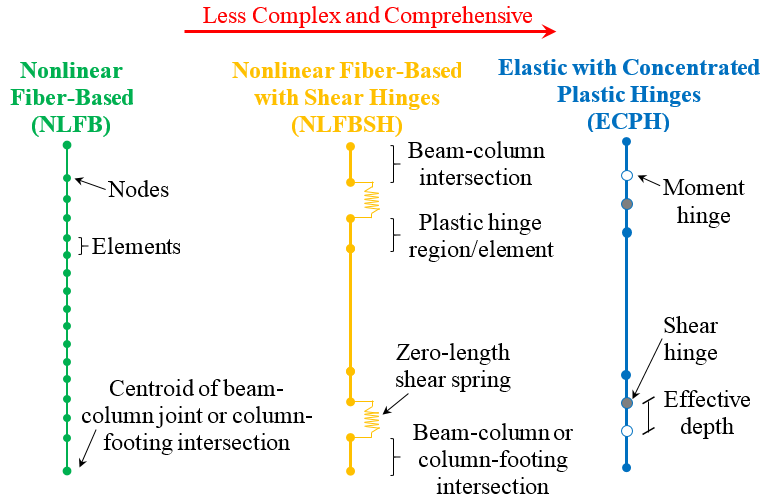
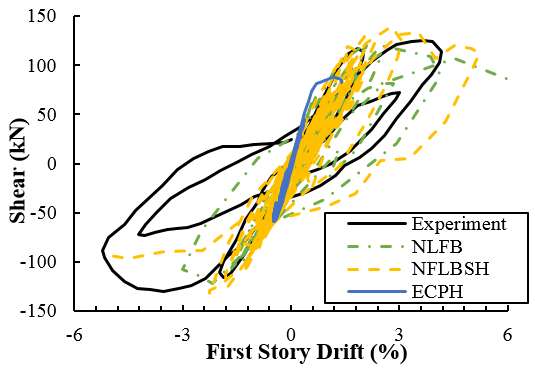
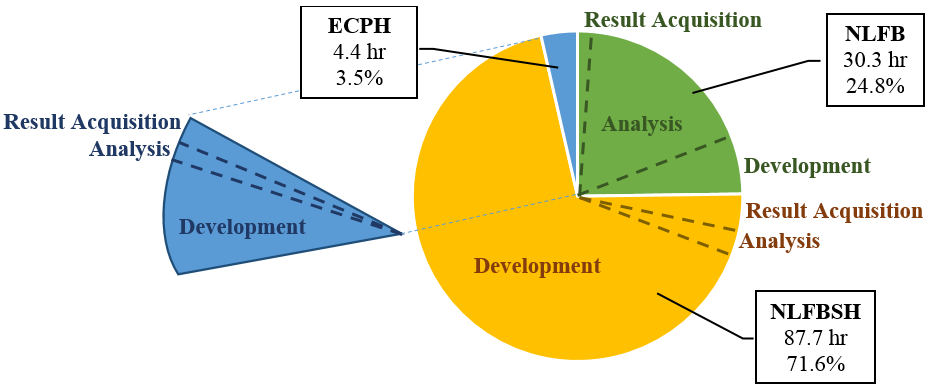 comprehensiveness. To evaluate their simulation accuracy and computational demand,
126 numerical simulations were performed for a previously-tested RC frame using a
PBEE framework. The accuracy of the calculated results was compared with the experimental
values in terms of the base shear and first-story drift (shear-drift figure above),
damage progression, and failure conditions. The computational demand of each model
was also evaluated in terms of required model development, analysis, and result acquisition
times. The influence of each modeling technique was compared using the calculated
risk to a set of performance limits evaluated by means of fragility curves. The nonlinear
models calculated significantly more accurate structural responses than the more-commonly
used plastic-hinge model. The model development and result acquisition times were
found to comprise a significant portion of the total computational demand of each
model (see the figure).
comprehensiveness. To evaluate their simulation accuracy and computational demand,
126 numerical simulations were performed for a previously-tested RC frame using a
PBEE framework. The accuracy of the calculated results was compared with the experimental
values in terms of the base shear and first-story drift (shear-drift figure above),
damage progression, and failure conditions. The computational demand of each model
was also evaluated in terms of required model development, analysis, and result acquisition
times. The influence of each modeling technique was compared using the calculated
risk to a set of performance limits evaluated by means of fragility curves. The nonlinear
models calculated significantly more accurate structural responses than the more-commonly
used plastic-hinge model. The model development and result acquisition times were
found to comprise a significant portion of the total computational demand of each
model (see the figure). 